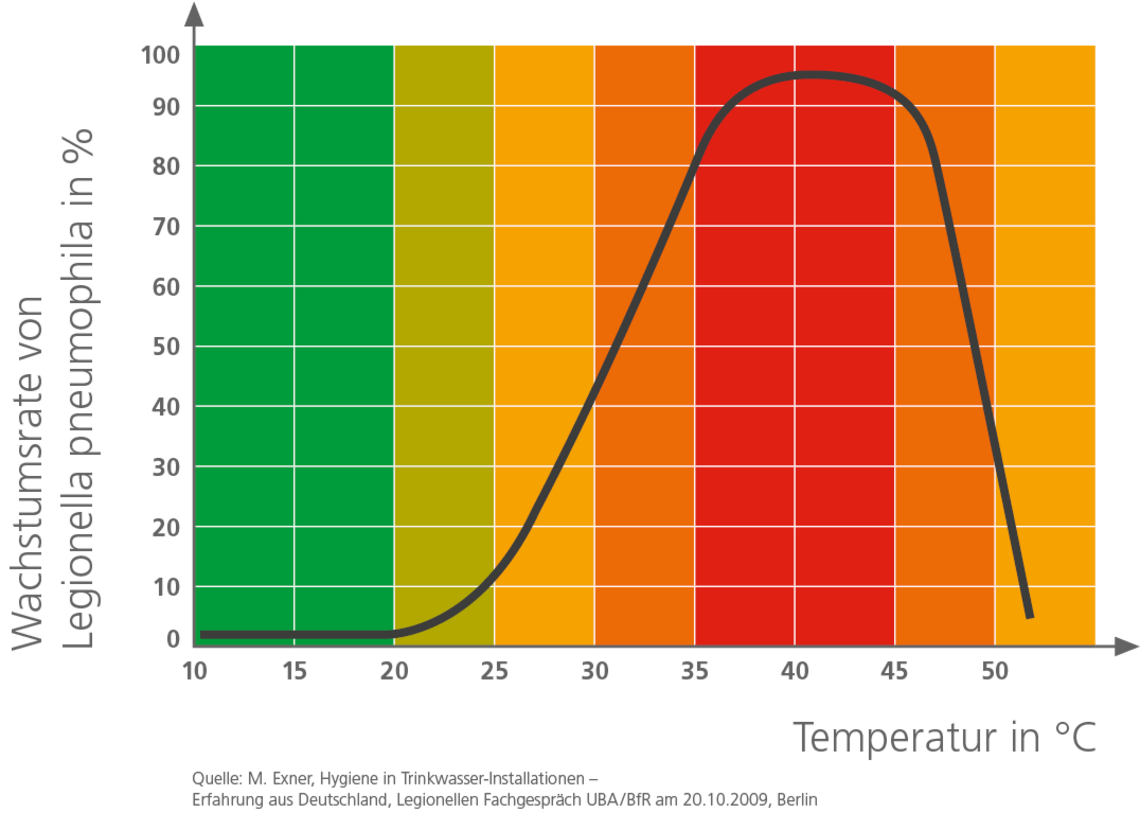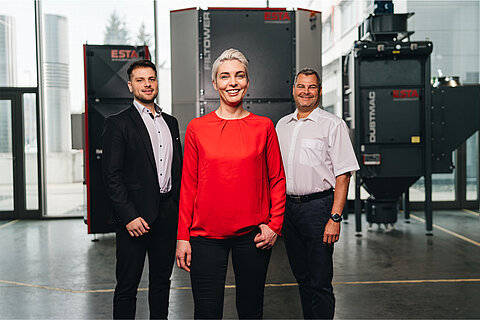Health hazard due to legionella – new obligations for plant operators (42nd BImSchV)
What are legionella and how are they transmitted?
Legionella are bacteria that can cause various illnesses in humans. They are environmental germs found worldwide and occur in small numbers as a natural component of surface water and groundwater. These bacteria are transmitted through aerosolized or nebulized water. The droplets containing the pathogens spread through the air and can then be inhaled. Legionella are not transmitted from person to person. In small quantities, they pose no risk to humans – however, if their concentration increases significantly, legionella can cause the dangerous Legionnaires’ disease. Additionally, these small bacteria can also develop during the operation of evaporative cooling systems, cooling towers, and wet separators.

Legionella multiply best at temperatures between 25 °C and 45 °C. Below 20 °C, they hardly reproduce, and above 60 °C, they are killed, making further reproduction impossible.
What danger do legionella pose and what symptoms do affected individuals show?
Anyone infected with legionella can develop legionellosis. The two most common forms of legionellosis are Legionnaires’ disease and Pontiac fever. The first symptoms of Legionnaires’ disease appear two to ten days after contact with the pathogen. It is a form of severe pneumonia and, if not treated in time or treated incorrectly, can be fatal in the worst case. The incubation period for Pontiac fever is between five hours and just under three days, averaging one to two days.
| Comparison | Legionnaires’ disease | Pontiac fever |
|---|---|---|
| Symptoms | Pneumonia: cough, chills, headache, high fever | Flu-like symptoms: fever, malaise, headache, and muscle pain |
| Duration of illness | Approximately four weeks | Approximately two to five days |
| Treatment | Antibiotics | Resolves on its own |
Those particularly at risk are older people with weakened immune systems. For them, even a small number of inhaled bacteria can cause severe illness. People with chronic diseases and smokers are also strongly affected. In Germany, the number of people infected with legionella each year is estimated at around 6,000 to 10,000. Men are affected 2 to 3 times more often than women.
Legionella prevention in industry
New regulation according to the 42nd BImSchV
The 42. Bundesimmisionsschutzverordnung, which came into force on August 20, 2017, sets out the requirements for the construction, operation, and monitoring of evaporative cooling systems, cooling towers, and wet scrubbers, and prescribes mandatory regulations for legionella prevention.
Which systems are affected by the regulation?
Wet separators used in recirculation mode (air is returned to the hall) are not subject to the 42nd BImSchV. Separators that vent air outdoors due to residual dust content (exhaust air mode) must be monitored and are therefore subject to the regulation.
Obligations for the operators of the systems
- The system’s process water must be tested internally every two weeks for chemical, physical, or microbiological parameters (e.g., dip-slide tests).
- Every three months, accredited laboratories must take samples of the process water and determine the general colony count and legionella levels. Legionella testing can be done every six months if the test values (100 CFU Legionella spp. per 100 ml) have not been exceeded for two consecutive years.
- A logbook must document all important information about the system, the results of internal and laboratory tests, and any measures taken (inspection, disinfection, repair).
- The notification requirement according to §13 applies from July 19, 2018. From then on, all systems must be reported to the responsible authority within one month (existing systems by August 19, 2018). This also applies to changes, decommissioning of systems, or changes of operator.
- Every five years, systems must be inspected by publicly appointed experts or inspection bodies of type A.
Measures in case of increase or exceedance of test and action values
If a laboratory test detects an increase in the general colony count concentration by a factor of 100 or more compared to the reference value, operators must identify the causes and take immediate action. If a legionella test exceeds the threshold values, a follow-up laboratory test is required.


